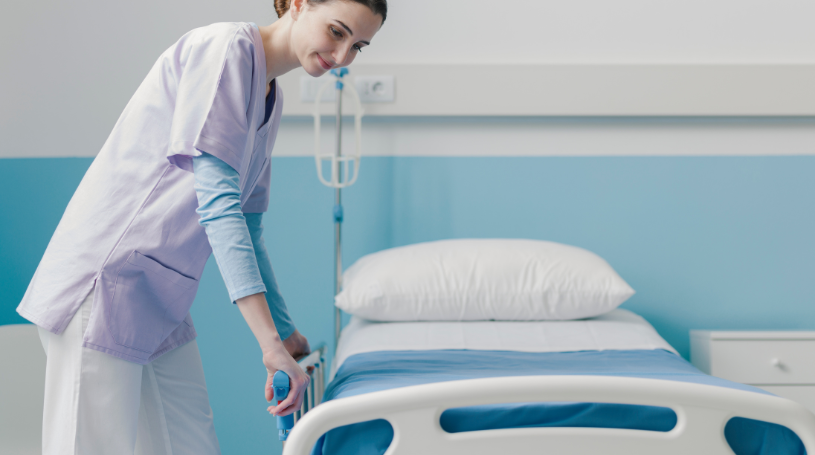A countrywide approach to the recent MHRA bed rail alert - column digital
What is the Medicines and Healthcare Products Regulatory Agency (MHRA)?
The MHRA is a regulator of all medicines, medical devices and blood components for transfusion in the UK. Its role includes overseeing investigations into adverse events with medicines and medical devices and promoting the safe use of medicines and devices within the UK.
The history behind the updated alert
Bed rails: management and safe use guidance was published in 2020 and updated in August 2023 (MHRA 2023). The MHRA continued to receive reports of adverse incidents involving bed rails, safety sides, cot sides and bed levers. The most serious incidents led to injury as a result of falls and death by asphyxiation following entrapment of the head, neck and chest.
During 1 January 2018 to 31 December 2022, the MHRA received 18 reports of deaths relating to bed rails and associated equipment, such as bed levers, and 54 reports of serious injuries. Chest or neck entrapment in bed rails is currently listed (number 11, 2018) as a ‘Never Event’ according to the NHS (NHS Improvement 2018, updated 2021). The MHRA documented that most incidents occurred in community care environments, particularly in an individual’s own home or in a nursing home. Reports also evidenced entrapment in
acute hospitals using trolleys, stretchers and emergency department beds with side rails.
These incidents often related to patients being left unsupervised on trolleys and stretchers with rails left up and the patient trying to get off the trolley or stretcher.
The MHRA investigated these incidents involving falls and found the likely cause to be worn or broken parts which should have been replaced during regular maintenance and servicing.
Incidents involving entrapment were found to include the following factors:
- a lack of any risk assessment around the use of equipment
- risk assessment not being updated following a change of equipment or a change in a patient’s condition, for example the prescription of an additional overlay mattress
- a lack of maintenance and servicing and parts not being replaced
- incompatibility issues – for example incorrect accessories (bumpers), incorrect pressure relieving mattress prescription to use with bed rails
- children and adults with atypical anatomy using inappropriate equipment.
The Care Quality Commission (CQC) prosecuted the Joseph Rowntree Housing Trust in 2017 following the death of a 98-year-old resident who fractured his hip following a fall from his bed (CQC 2022). After treatment in hospital he was discharged back to the care home where he fell again, refracturing his hip, and later died in hospital. The court heard his fall could have been prevented if the care home had followed the correct procedures around bed rail safely. Prior to the incident, a safety consultant had identified 14 beds in the home required bed rail extensions to stop people falling. The court found the home negligent as it had not authorised the work until after the resident’s accident. The court also found a history of the resident becoming trapped in his existing bed rail and he had attempted to climb over the rail four times prior to his fall.
The full article including:
- List of equipment within the alert
- Bed grab handles
- Prescription of bed rails
- Other devices
- What does the guidance recommend
- Plus-size users
- Organisational actions
- Policy
- Training
- Application of use
- Measurements
can be accessed in our member-exclusive journal column digital.
To become a member visit: https://www.nationalbackexchange.org/become-member

